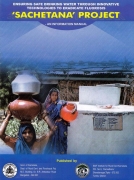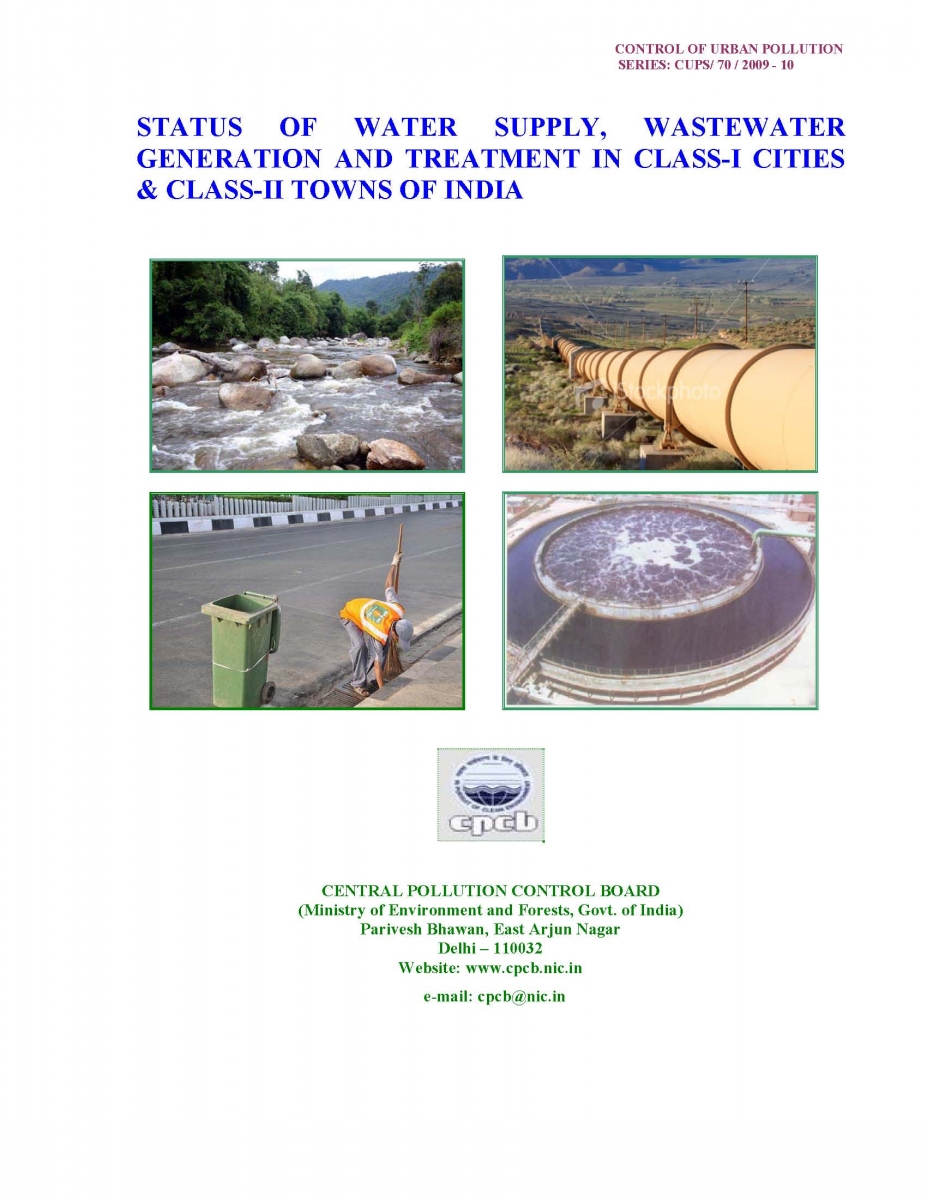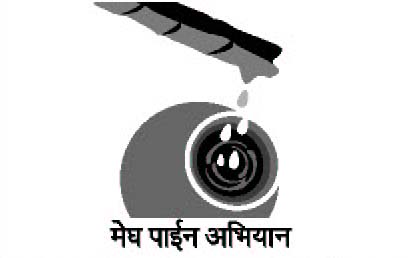Contamination, Pollution and Quality
Ensuring safe drinking water through innovative technologies to eradicate fluorosis - Sachetana Project - Information manual by BIRDK and Govt of Karnataka
Posted on 05 May, 2010 05:31 PM This manual produced by BIRD-K and DRDPR (GoK) provides the details of the Sachetana project that aims to provide safe drinking water to fluorosis affected populations through the adoption of innovative technologies for rainwater harvesting and groundwater recharge.
This manual produced by BIRD-K and DRDPR (GoK) provides the details of the Sachetana project that aims to provide safe drinking water to fluorosis affected populations through the adoption of innovative technologies for rainwater harvesting and groundwater recharge.
The project is being implemented through the Gram Panchayats of 60 villages from 4 taluks among three districts of Karnataka state over a period of five years (2006-11).
The objectives of the project include:
- Provision of safe drinking water through innovative rain harvesting structures
- Recharge of groundwater through excavation of percolation ponds
- Recharge of existing bore wells and direct recharge of aquifers
- Awareness generation activities to promote sustainable management and management of water resources and water harvesting structures.
Rainwater filtration from large roofs in polluted environments to potable quality
Posted on 21 Apr, 2010 05:25 PMIs there anyone in India who is willing to develop a multi-stage Saferain unit with me?
Imagine a 5000 sq metre factory in New Delhi, (or Shanghai, or wherever).
The air is polluted, the roof is polluted, and, yet, I say that potable. or near so, can be delivered in a rain event. The following is a cut and paste. This is how it's
Press release : UL certifies Kimberlite Chemicals for health effects in drinking water
Posted on 20 Apr, 2010 11:25 AM
For Immediate Release
Underwriters Laboratories Certifies Kimberlite Chemicals for Health Effects in Drinking water
Kimberlite Chemicals Becomes First Indian Company to Earn UL
Certification for Antiscalant Water Treatment Chemicals
Bangalore, India, April 14 2010 – Underwriters Laboratories (UL), a global leader in drinking water quality and safety, today announced that Kimberlite Chemicals India Pvt. Ltd., received UL certification for its antiscalant water treatment chemicals. Kimberlite’s antiscalant water treatment chemicals will now bear the UL Classified Water Quality Mark, indicating certification to ANSI/NSF Standard 60 for health effects.
UL launched its drinking water product certification program in India in 2009 and has been working with a number of Indian companies on a broad range of products including disinfection and oxidation chemicals, coagulants, drinking water treatment units, gaskets, butterfly valves, sediment filter cartridges and activated carbon. Kimberlite, a renowned company known for its world-class technology product and service in the field of specialty chemicals and coatings, is the first Indian manufacturer to be certified through UL’s water program for antiscalant water treatment chemicals.
UL’s certification of Kimberlite’s antiscalant chemicals provides verification that these chemicals have been independently tested and validated to meet both industry standards for health effects in drinking water as well as UL’s rigorous certification requirements. Antiscalant chemicals are used to protect reverse osmosis (RO) membrane life and are used in industrial RO purifiers.
A plan to clean and stop pollution in Yamuna within 7 months
Posted on 01 Apr, 2010 11:29 AMDelhi, India
I, Gopi Dutt, want to draw your attention to problem that Delhi has been facing since as long as 10 yrs now. I am talking about the pollution in Yamuna caused by devotional material, Polybags, Flowers etc. Our govt., different NGOs and now Maharaja Sri Sri Ravi Shankar have put their best efforts to clean up the river. We all have been trying to clean it up for the past 10 yrs but it hasn’t stopped yet. Does anyone have a plan to stop this that here is no further need to clean n re-clean the river? The problem is that we only create awareness that people should not pollute the river but there are no measures taken to stop this pollution.
Bioremediation of turbid surface water using seed extract from Moringa Oleifera Lam (Drumstick Tree)
Posted on 26 Mar, 2010 06:38 PMThis research paper describes an indigenous water treatment method, that uses Moringa oleifera (Drumstick) seeds in the form of a water-soluble extract in suspension, resulting in an effective natural clarification agent for highly turbid and untreated pathogenic surface water.
Status of water supply and wastewater generation and treatment in Class-I cities and Class-II towns of India - A report by CPCB (2009)
Posted on 23 Mar, 2010 03:34 AM This is the fourth in a decadal series of reports published by the Central Pollution Control Board (CPCB), previous ones published in 1978-79, 1989-90 and 2000, which provides basic information about the status of water supply and sewage generation and treatment of 498 Class-I cities and 410 Class-II towns, along with information on 53 coastal Class-I cities and 35 coastal Class-I towns, besides Ganga Basin as a separate subsection.
This is the fourth in a decadal series of reports published by the Central Pollution Control Board (CPCB), previous ones published in 1978-79, 1989-90 and 2000, which provides basic information about the status of water supply and sewage generation and treatment of 498 Class-I cities and 410 Class-II towns, along with information on 53 coastal Class-I cities and 35 coastal Class-I towns, besides Ganga Basin as a separate subsection.
Reverse osmosis plants for rural water treatment in Gujarat - A research paper by CAREWATER
Posted on 23 Mar, 2010 01:38 AMThis research paper attempts to understand and map the Reverse Osmosis (RO) phenomenon, a technology that is turning out to be an important solution for drinking water treatment in rural Gujarat. Treatment plants with capacity ranging from 10 litres per hour (lph) to 6000 lph are now supplying drinking water in several hundred villages of the state. Small sized plants with capacity < 20 lph are used by individual families whereas medium to large sized plants (>100 lph) are being used for public consumption.
Organising safe drinking water through community participation in flood-affected areas of Bihar - Case studies from the work of the Megh Pyne Abhiyan network
Posted on 22 Mar, 2010 02:08 AM This set of case studies (in hindi), details the work of Megh Pyne Abhiyan and their network partners - Gramyasheel and Samta, in organising safe drinking water in participation with the local village communities, in the flood affected West Champaran, Supaul and Khagaria districts of Bihar.
This set of case studies (in hindi), details the work of Megh Pyne Abhiyan and their network partners - Gramyasheel and Samta, in organising safe drinking water in participation with the local village communities, in the flood affected West Champaran, Supaul and Khagaria districts of Bihar.
National Workshop on Water Conservation and Quality Challenges: Towards Adaptive Strategies, TERI, New Delhi
Posted on 17 Mar, 2010 06:02 PMWORLD WATER DAY CELEBRATION
22 March 2010
National Workshop on
Water Conservation and Quality Challenges: Towards Adaptive Strategies
Organised by
The Energy and Resources Institute (TERI) in collaboration with, UNICEF and Hindustan Unilever Limited (HUL)





